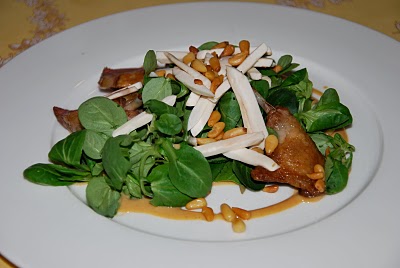Albacore tuna is sustainable, cheap in price and much under rated in Australia. It is not sashimi grade so the Asian export market does not want it and therefore in Australia we also tend to undervalue it. It is denser in texture but still excellent for cooking (lightly or cooked for longer). As in Australia, Blue fin tuna is the preferred tuna in Sicily; if it is sustainable depends on how and where it is caught – it should be wild caught and aquaculture is not an option.

Unfortunately I rarely find albacore tuna where I live in Melbourne and if I do, I always grab it when I can and cook it as I would cook blue fin tuna.

I like tuna seared and left rare centrally but my Sicilian relatives eat tuna very well done and this is also how it is presented in the traditional home-style restaurants in Sicily.
In Sicily there are numerous ways tuna but Tonno alla stemperata is one of the favourites in the south eastern part of Sicily. It was first cooked for me by one of my cousins, Rosetta, who lives in Ragusa. She and her husband have a holiday house on the beach at Marina di Ragusa, and she usually buys most of her fish from the fishermen on the beach.
Although Rosetta prefers to use tuna in this recipe, any firm-fleshed fish, thickly sliced, is suitable. She prefers to cut the tuna into large cubes – this allows greater penetration of the flavours in the sauce and of course, it will cook to a greater degree and more quickly.
Rosetta cooked the fish in the morning and we ate it for lunch, at room temperature…in Australia you may find this unusual but eating it at room temperature and some time after it has been cooked allows the flavours time to develop.
A version of this recipe is also in my first book: Sicilian Seafood Cooking.

I have used Albacore tuna, trevally, mackerel or flathead (better choice category) successfully in this recipe.
tuna or firm-fleshed fish, 4 slices
sliced white onions, 2
capers, ½ cup, salted variety, soaked and washed
white wine vinegar, about 2 tablespoons or for a milder taste use 1 tablespoon of white wine and one of vinegar
extra virgin olive oil, about 2 tablespoons
salt, black pepper or red chilli flakes (as preferred by the relatives in Ragusa),
celery heart, 2 or 3 of the pale green stalks and young leaves, chopped finely
green olives, ½ cup, pitted, chopped
bay leaves, 4
Soften the onion and celery in about half of the extra virgin oil, and cook until the onion is golden, about 5 minutes, stirring frequently.

Add the fish, olives, capers, seasoning and bay leaves and sear the fish. The pieces of fish only need to be turned once.

Add the vinegar and allow the vinegar to evaporate and flavour the dish.

Remove the fish from the pan if you think that it will overcook and continue to evaporate.
Optional: Decorate (and flavour) with mint just before serving.

You can tell I am in South Australia by some of the photos of the fabulous varieties of fish I am able to purchase in Adelaide when I visit.
















